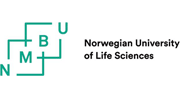Lindane
Traded as: Aphtiria, Lindanest, 1% or 3% Lindane Shampoo, Scabecid 1%, Elenol, Gammexane, Tri-6, Lindafor, Lindatox, Agrocide, Isotox, Esoderm, Aparasin.
What is it? Organochlorinated insecticide, used also as pharmaceutical product, fabricated from HCH, classified as persistent organic pollutant (POP) by the Stockholm Convention of 2009 (the new POPs).
Use (purpose):
- Used as second-line treatment against lice and mange in humans and animals.
- Broad spectre insecticide for seed treatment (cereals, rapeseed) and soil treatment (for corn, and beet), foliar treatment (orchards, vegetable crops, horticulture, forage crops).
- Construction wood protection.
Present status: Lindane production is forbidden in many countries of the globe but its sale and use as lice and mange treatment is allowed. There are numerous other types of efficient molecules that can replace successfully Lindane in its antiparasitic applications reason for which numerous pharmacies are no longer selling Lindane-based products.
In Romania: this substance was used both as an agricultural pesticide, as well as a pharmaceutical product – shampoo used against lice. It was manufactured in Romania until 2006 and its production was banned since 2007, according to the third country report for Romania issued by the Secretariat of the Stockholm Convention (2014).
Health effects: irritating for eyes and respiratory system, neurotoxic, immune-toxic, having adverse effects on the reproductive function and on development. The long term exposure induces contact dermatitis. The target organs are the nervous system but also the liver, the kidneys and the endocrine system. The acute exposure symptoms are convulsions, cough, dizziness, headaches, eye redness, nausea, weakness, tremor, paraesthesia, respiratory depression, collapse and death.
Exposure limits, lethal dose:
The cutaneous exposure limit set by OHSA (the American Occupational Health and Safety Administration) for occupational exposure to Lindane is 0.5 mg/m3 per standard 8 hours' work day.
The lethal dose LD50 is 88 mg/kg body weight in case of ingestion and 1 g/kg body weight for cutaneous absorption.
Contamination sources:
- Occupational: People working in agriculture (insecticide treatment) are the most exposed, as well as the veterinarian staff (doctors, technical staff) and the employees of the public health system performing Lindane treatments for external parasites.
- Air: following inhalation of dust from Lindane treated barren agricultural lands. Wind carries dust al large distances, including over cities and regions where the substance is no longer used.
Useful links:






